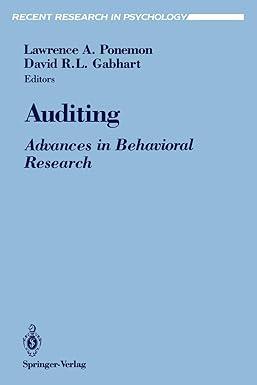Question
MACROECONOMICS given: Crowding out with algebra. Consider an economy described by the following model. Y = K 1/3 L 2/3 K = 1000; L =
MACROECONOMICS
given:
Crowding out with algebra. Consider an economy described by the following model.
Y = K1/3L2/3 K = 1000; L = 1000 G = 100 T = 100 C = 250 + 0.5(Y-T) I = 600 100r
i. Calculate the equilibrium real interest rate, national saving, public saving, private saving, consumption, output, and investment. List your numbers out like this:
Y = 1000
r = 4
S = 200
Spub = 0
Spriv = 200
C = 700
I = 200
ii. Suppose the government increases G to 250. Repeat your calculations to find the new real interest rate, national saving, and investment. You only need to report the numbers since your method should be the same as in part (i).
Y = 1000
r = 5.5
S = 50
Spub = -150
Spriv = 200
C = 700
I = 50
Question:
If modify the consumption function to it depends on r, as discussed briefly in the textbook, we can make S depend on r which is more realistic.
i. Which consumption function would make S(r) increase with the real interest rate? Briefly explain your choice. C = 450 + 0.5(Y-T) 50r OR C = 50 + 0.5(Y-T) + 50r
ii. Is there more, less, or the same amount of crowding out when G increases in this modified version? (In other words, repeat question 9 but with the new S(r) function.) Explain!
Step by Step Solution
There are 3 Steps involved in it
Step: 1

Get Instant Access to Expert-Tailored Solutions
See step-by-step solutions with expert insights and AI powered tools for academic success
Step: 2

Step: 3

Ace Your Homework with AI
Get the answers you need in no time with our AI-driven, step-by-step assistance
Get Started


